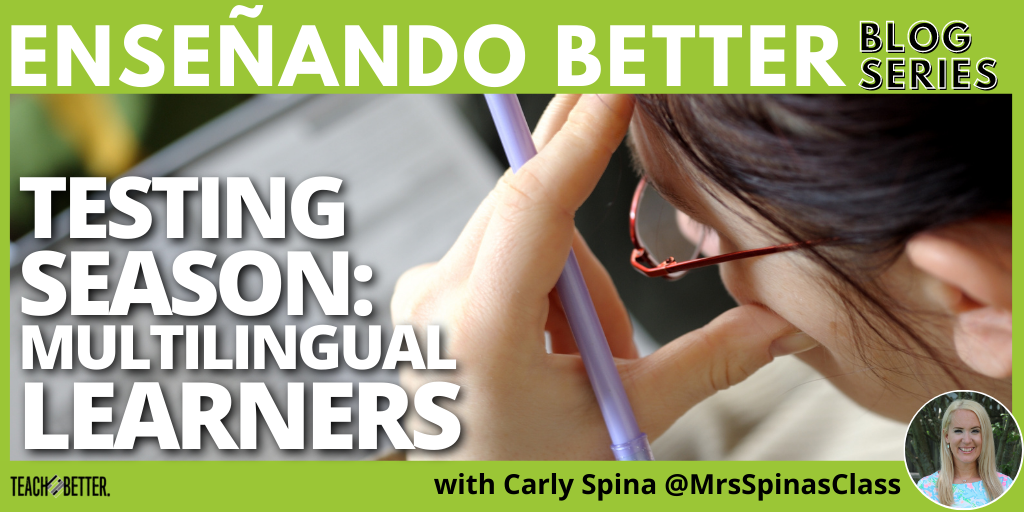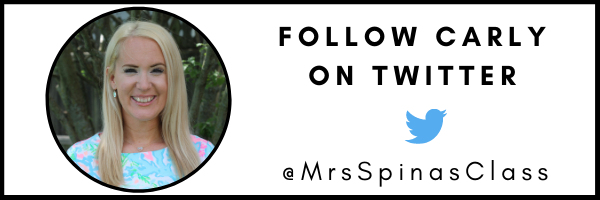TL;DR:
- October and February are months when staff morale tends to dip.
- February also often brings about the testing season.
- Multilingual students are often tested even more than the rest of the students.
- Try to make your class a creative, fun, and inspiring place to be during testing season.
The Armpits of the School Year
Every January, I tend to get bummed out a little more than usual. The holidays are over, winter is still looming, and every day in the Chicago area just appears gray. It’s dark when I arrive at work, and also dark when I leave work—I feel like I never see the blue sky! I’m definitely one of those people affected by the seasons and the weather.
In the book Lead with Appreciation, Amber Teamann and Melinda Miller note that October and February are “affectionately referred to as the armpits of the school year,” and staff morale tends to dip during those months (2019). While we are teetering on over to February, it’s worth acknowledging that now.
While many times we feel powerless during these seasons of ongoing assessments, we can still have magic in our spaces. Reflect on what brings you and your students joy and intentionally invest in those experiences. Click To TweetTesting Season
Added on to the plate of all educators, and in particular, those who are serving in English Learner, Dual Language, or Bilingual Education programming, we are also inundated with the doldrums of “testing season.” Folks who serve multilingual learners tend to agree that our students are often the most overly-assessed students within a system. More specifically, our students are expected to take benchmark assessments, federal and state assessments, and district assessments, just like everyone else. Additionally, we are also giving federally-mandated language assessments. Finally, if our students are learning in more than one language (within a dual language or bilingual program), our students are also given those assessments in the heritage language. WOW!
Folks are so quick to point out how our students measure up against normed tests and proclaim that they have “achievement gaps” instead of taking the time to look at the bias of any one set of assessments. While we swim in data, we often wonder the purpose of our students taking just one more assessment. We express our frustration with the amount of instructional time we lose each school year due to administering these various assessments.
Our hearts break for our students as they are ushered into classrooms with bare walls (since all the instructional posters must come down), rows of desks with privacy folders, devices, and headphones. We are weighed down by the monotony of reading test administrator scripts, the pacing of the room to administer the test, and the constant thumbs-up statements of “Do your best!” It’s physically, emotionally, and intellectually exhausting. Then we collect all the devices, testing materials, and secure them in a location so that we can do the same thing the very next day.
We feel powerless. We just want to teach. How do we get through this?
Let’s encourage.
When the instructional posters come down, what goes up? Have a conversation with students about what they want on the walls. I love hanging pictures of all the folks in their corner: former teachers, current teachers in other classrooms, family members, the local fire department, engineers from a local firm, friends from the public library, and others. Also, I email our classroom friends and ask them to take a selfie holding up a short, encouraging note. I print them out and dangle them from the ceiling so that no matter where students look, they know they have friends in their corner cheering them on.
Let’s get inspired.
Ask students what inspires them. Was there a quote from a book they’ve read recently? Is there someone in their life that always motivates them? Was there a cool picture they saw of a beautiful mountain landscape that helps them remember the awe of the world? Is there a song lyric that fires them up? Create a classroom Inspiration Wall! This is a great way to have students reflect on the ways they feel inspired.
Let’s get creative.
Hit up the dollar store and grab one item—the more random, the better (for example, a spatula). See how you could incorporate the item into a lesson next week! Better yet, ask students to design a learning experience incorporating the item! How can we teach multiplication using this spatula?
Let’s connect.
After the testing sessions are over for the day, take time to create greeting cards for folks in the community. This may include other teachers within the school building, the local nursing home, a local fire department, the food pantry, or even the local government hall. Draw pictures, share jokes, share a story, and have students sign the card. Package them all up and drop them off or send them via snail mail. You never know, this could be a great way to create new partnerships with local agencies in your own community! Plus, kids are creating and spreading joy!
Let’s rest.
I used to love doing a thing we called a Spina Spa Day. We turned off the lights, spread out across the room, and played relaxing music. There were a few times where I even brought in sliced cucumbers so students could place them on their eyes for a refreshing experience! Modeling rest is important, especially in today’s hustle culture.
Let’s play.
Taking time to get outside and play (hello, mask break!) is important. Or, go ahead and break out some board games and stay inside and have a game break. Play is important and no matter how old our students are, they are still children. Plus, adults need play, too!
[scroll down to keep reading]
Testing Season: Bring the magic!
While many times we feel powerless during these seasons of ongoing assessments, we can still have magic in our spaces. Reflect on what brings you and your students joy and intentionally invest in those experiences. Be sure to share what you are doing to break up the monotony of these assessments so that others can also feel energized by your experiences. It also opens the door for others to share what they’re doing. We absolutely need each other in this work!
References
Miller, Melinda; Teamann, Amber. Lead with Appreciation. 2019.
About Carly Spina
Carly Spina has 15 years of experience in Multilingual Education, including her service as an EL teacher, a third-grade bilingual classroom teacher, and a district-wide Multilingual Instructional Coach. She is currently a multilingual education specialist at the Illinois Resource Center, providing professional learning opportunities and technical assistance support to educators and leaders across the state and beyond. Spina enjoys connecting with other educators and leaders across the country and beyond and is an active member of the multilingual education professional learning community. Her first book, Moving Beyond for Multilingual Learners, was published in November 2021 by EduMatch Publishing and is available on Amazon.



